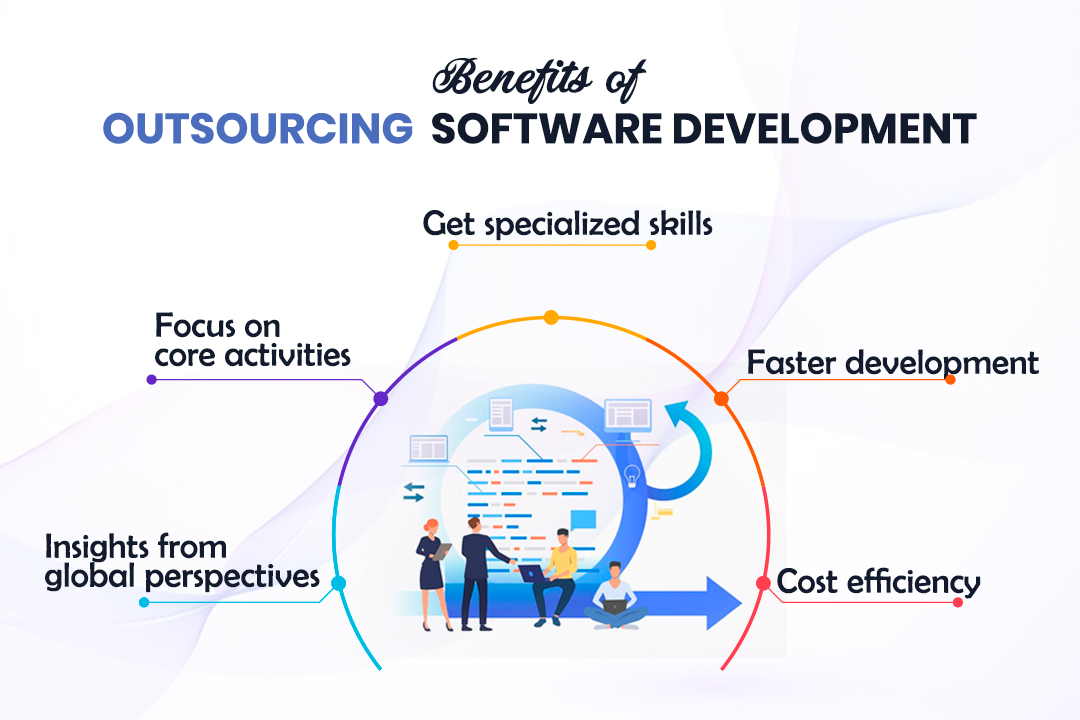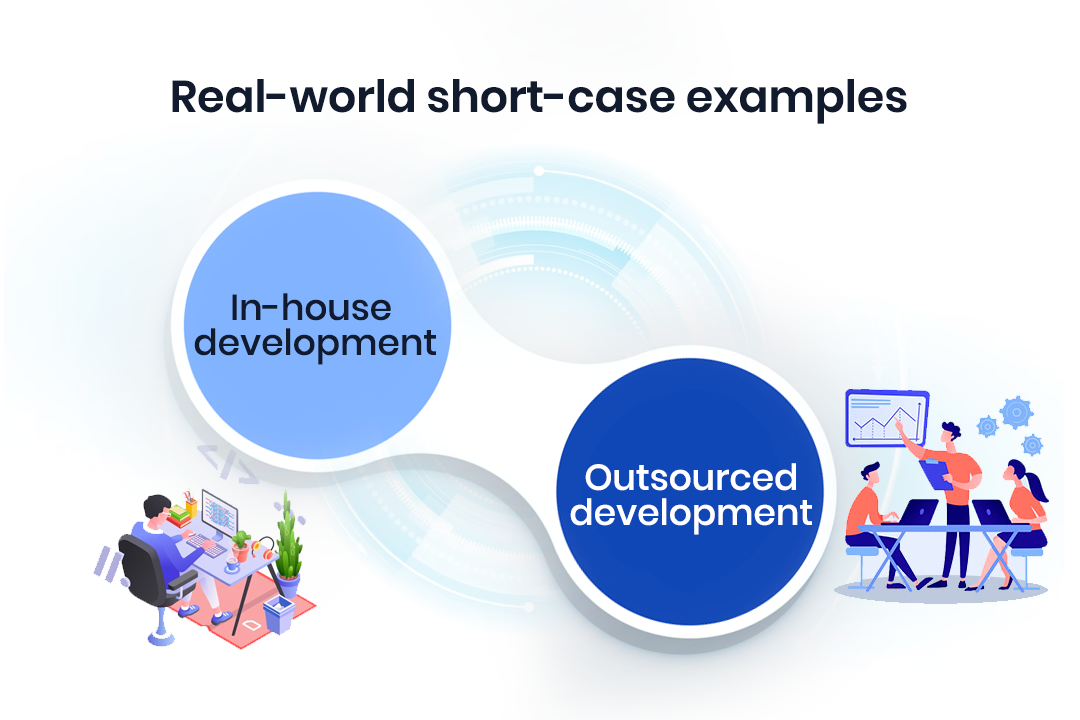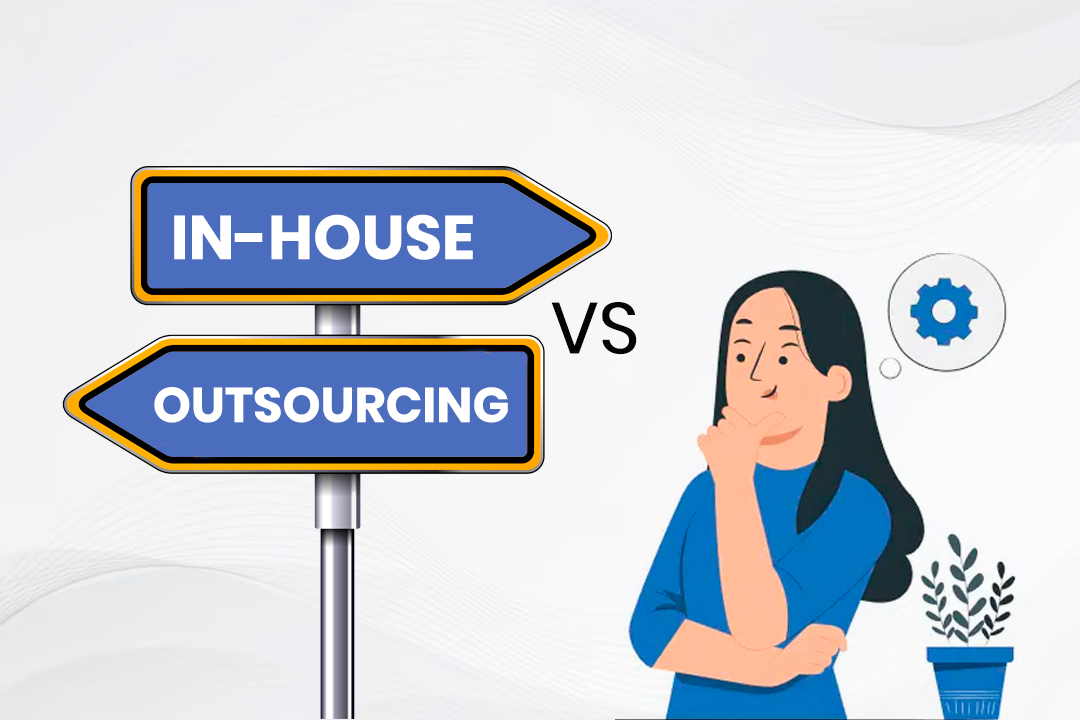In recent years, the IT outsourcing industry has been flourishing rapidly. In-house vs. outsourcing software development: it sounds tricky, but many companies are opting for outsourcing instead of in-house recently.
A report published by Statista’s research department shows that the IT outsourcing industry’s total revenue managed to almost $400 billion in 2022. Furthermore, among IT leaders, 64% of respondents opted for outsourcing software application development in 2017. In 2023, it’s expected that nearly 51% of in-house expenditure will decrease. Should you also choose outsourcing over in-house software development?
Well, exploring both approaches will help you understand each significant factor that shapes the outcome in the long term. So, keep reading till the end.
Understanding in-house software development
Benefits of in-house software development

Control
Intellectual property
Cost-effective
Easier integration
Security
Challenges of in-house software development
Expertise and skills gaps
Time-consuming
Project management
Budget planning of in-house software development
Personal costs
Infrastructure expenses
Development time
Maintenance and support
Unpredicted expenses
Factors to consider for team expertise
Team expertise is essential when it comes to in-house development. Here are major factors to consider while selecting people to work in your team:
- Roles and skills
- Expertise in technologies
- Domain knowledge
- Collaboration and communication skills
- Problem-solving and creativity
- Agile/scrum methodologies
- Continual learning and adaptability
- Documentation and reporting
- Testing and quality assurance
- Security awareness
Understanding outsourcing software development
Outsourcing software development refers to partnering with third parties outside of the company to develop software. It has benefits such as cost-effectiveness, specialized skills, faster delivery, etc. Nowadays, it’s getting more popular. However, many factors come into consideration when choosing the right outsourcing partner. Some significant factors are the company’s experience, methods, work ethics, and culture.
Benefits of outsourcing software development

Get specialized skills
Focus on core activities
Faster development
Insights from global perspectives
Cost efficiency
Challenges of outsourcing software development
Communication barriers
Hidden costs
Lack of control
Labor costs
Infrastructure expenses
Operational expenses
Hidden costs
Time and efficiency
Choosing the right outsourcing partner
The partner that you want to outsource must align with your software needs and goals. Here are essential factors to consider while choosing the right partner:
- Expertise and experience
- Quality and standards
- Communication and transparency
- Scalability and flexibility
- Security measures
- Cost and value
- Location and time zone
- Legal and contractual aspects
- Customer support and maintenance
- References and reputation
Real-world short-case examples

These real-life examples will show how companies measure their needs to choose between In-house and outsourcing software development. They consider all factors of pros and cons of their unique requirements to work on.
In-house development
Case 1: Google company prefers In-house development. It’s easier for them to control their unique software needs. Additionally, it helps in maintaining their customization without any communication gaps.
Case 2: JPMorgan Chase, a financial institution, chooses In-house development. They are mindful of their security. In-house development helps them watch over requirements and sensitive data to keep them safe within the company.
Case 3: Microsoft company invests in its in-house development to stay ahead in core technologies. They focus on building expertise and to promote innovation in the long term.
Outsourcing development
Case 1: IBM often invests in outsourcing development. And that benefits it with cost efficiency and a variety of skills and expertise from different regions at a lower cost.
Case 2: Slack, in its early days, outsourced development to scale flexibly and quickly. It was easier to get skilled resources to get the process done faster.
Case 3: WhatsApp uses outsourcing so that feature updates, maintenance, and responses to users’ questions happen quickly.
In-house vs. outsourcing software development: which one to choose?
Now, the real question comes. In-house vs. outsourcing software development: which one is more suitable for your business? Well, that entirely depends on your needs and concern factors. If you’re concerned about control, direct communication, cost-effective solutions, and security, then in-house development is good to go with. However, if you want to focus on complex tasks and have concerns related to specific skills, expertise, and faster growth at a lower cost, then outsourcing suits you the best. Whatever you choose, remember to choose it with proper consideration of pros and cons from both sides.
Want a partner to help you with the development process so that you can focus on your critical operations in the business? Then, contact us today for outsourcing services. StakkDev Inc. helps companies by providing outsourcing services to give them cost-efficient and proven skillful solutions.

Leave a Reply